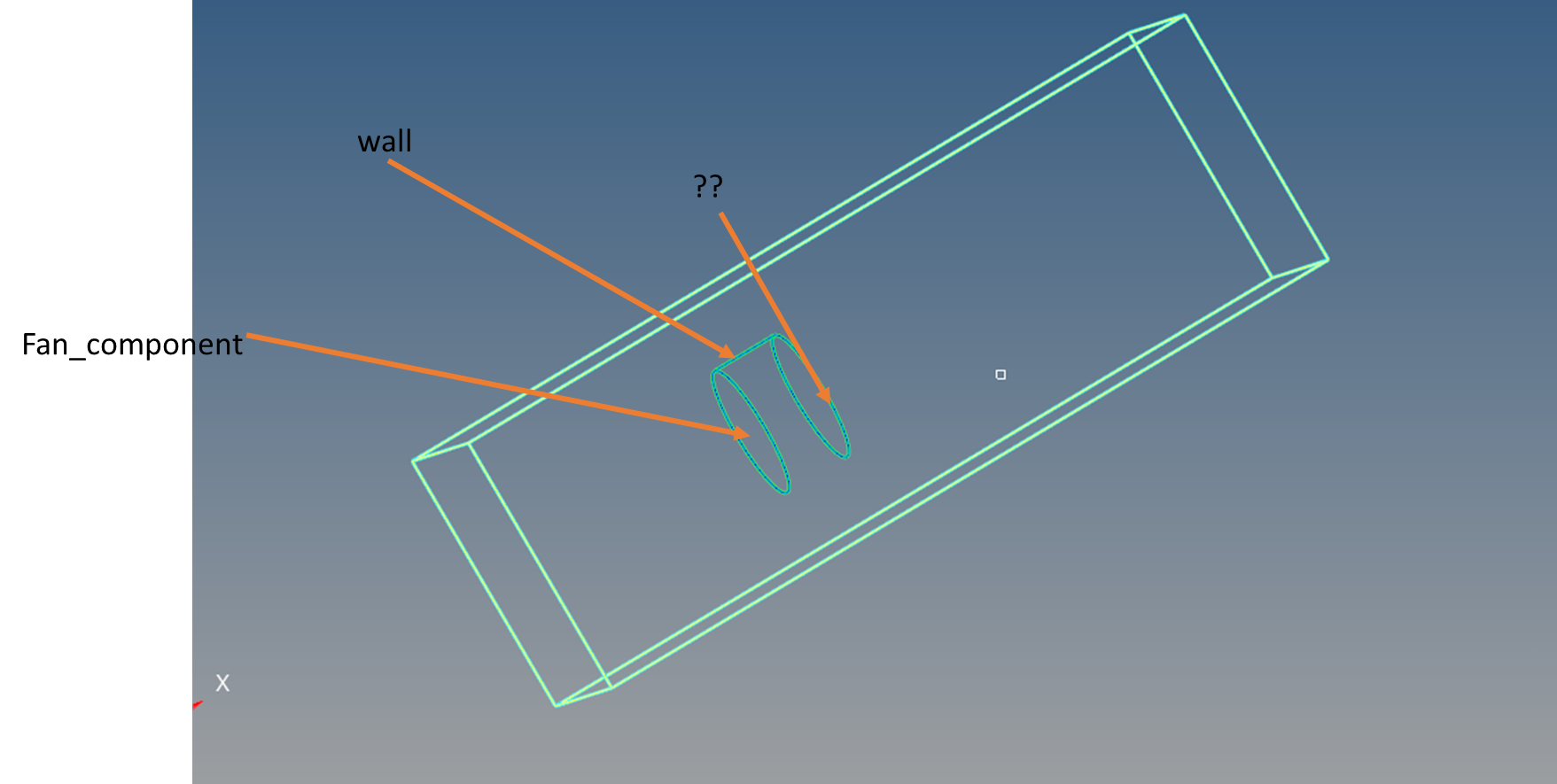Hi all,
I am trying to define a internal fan inside a domain. The problem is that I can´t find the correct way to define the fan.
Previously I had checked the tutorial. In the tutorial (ACU-T: 5100 Modeling of a Fan Component: Axial Fan)
the fluid of the fan and the surface of fan component are inside a pipe and occupy the whole section (see next figure). where the brown section is the fluid of the fan.

In my case, I have a small fan inside a fluid domain, see figure below:

The steps I´ve taken to prepare the model are the followings:
1. I create the 2d mesh of the cylinder surface and the outer domain surface.
2. I create the domain volumen elements taking into account the surface elements of the cylinder and the outer box.
3. I create the volume elements inside the cylinder.
The mesh is shown in the next picture:

The problem rises when I define the boundary conditions on the cylinder, see picture below.
1. In the fan inlet (left face of the cylinder), I define the fan component boundary condition
2. In the lateral walls I define the wall boundary condition,
3. But I don´t know what boundary condition I should implement on the right face of the cylinder. In the tutorial there is no boundary condition in the fan outlet, but in my case, if I delete the 2d elements of the cylinder in that part, there will be free edges there.
Is my understanding of the fan component correct?

I am creating the mesh and defining the setup in Hypermesh.